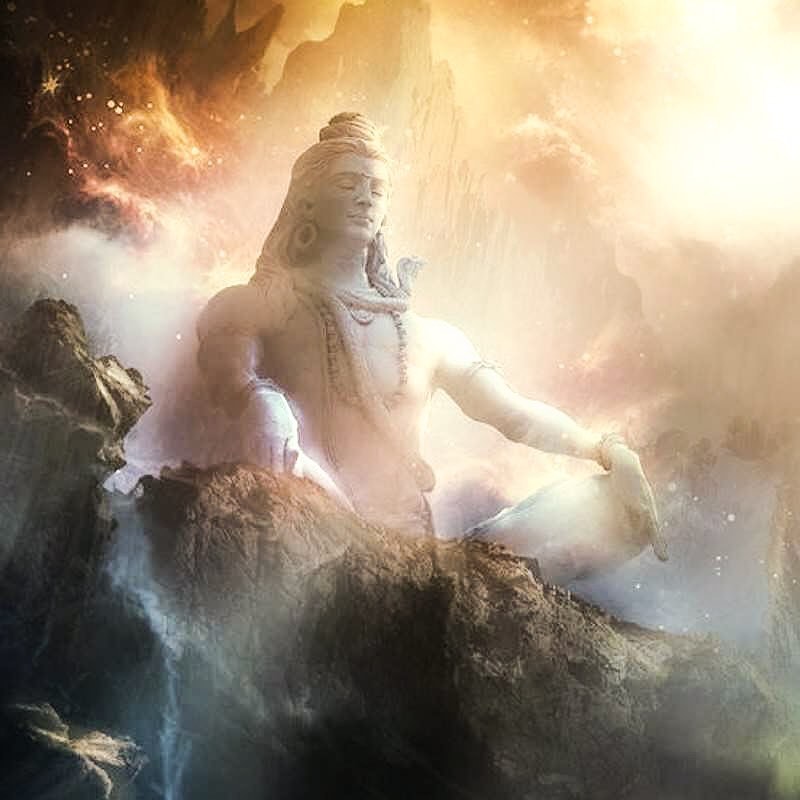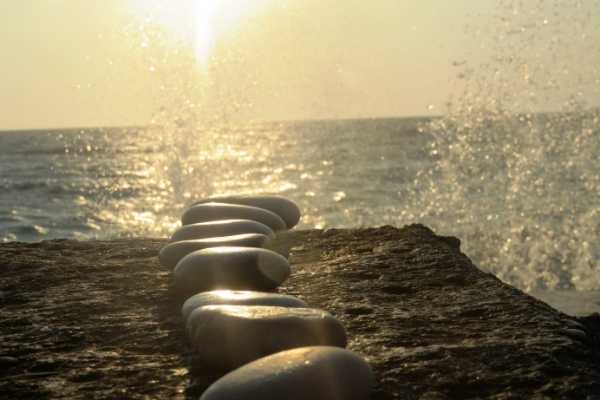There’s awakening and there’s recognition. There’s realization and there’s an abiding in that realization. There’s even a mystical enlightenment – all of these words mean something, even without tracing the origins of the English meanings back to their spiritual Sanskrit or Pali progenitors. Oy, there’s another word – spiritual. But when it comes to the word sāmadhi, well, I suppose we do have to look at what that means, classically. It’s clearly a word on loan to us from a tradition not our own, and it behooves us to understand the original intent behind the meaning if we’re going to appropriate it into our cultural lexicon and base our creations on it.
I created a seven-module experiential curriculum with the intention of guiding a practitioner through the Samadhi construct in stages, because traditionally the word itself is understood, like awakening, to be an ongoing experiential process that unveils reality layer by layer, unfolding and blossoming like a flower. I encourage students of this curriculum to get their feet wet with a masterclass that first explores the closest dimensions of the psycho-physical experience. The class also serves as a springboard into module 1 of the standard curriculum, the practice of meditation. Only upon establishing such a practice, as Patanjali will say in the opening remarks of his sutras, might we even begin to start talking about the reality of Yoga in module 2. Because after all, yoga means samādhi.

Psycho-physically, the term yoga connotes meditation, concentration of the mind, and the various techniques to accomplish the exercise of purposefully uniting the dual disposition of subject and object proficiently. The Yogatattva Upanishad asserts the importance of Jñana (knowledge) to the process and the practice of viveka – discrimination. Through jñana Brahman is revealed. Yoga is therefore the perfect union of jivātmā and paramātmā.
The realization of a spiritual practice is intuited; recognition and integration being based on a practical criteria of knowledge, just like with any undertaking. But how does one begin to deliberately quantify states of freedom and liberation, both from judgement and/or samskara – the impressions of experience? Yoga Philosophy tells us that:
Samādhi is a condition of absorption achieved through a practice of focused attention and steady, effortless meditation.
At first glance we might consider that any artisan or master craftsman would effectively be working from within a state of samadhi when with single-minded attention they apply themselves to their work. Samadhi, however, is much more nuanced.
The experiential awareness of a master craftsman is to the apprentice, what the awareness of the yogin in samādhi is to the common wo/man. Samādhi is enhanced awareness, augmented with ability and potential. Skillful application of this awareness leads to the ultimate goal of total synchronization of the personal Self with the Greater Self called Nature, or the Absolute. It is the pinnacle of being; non-dual awareness finds functionality in the dual environment. This state is understood as ritambhara prajna.
Okay, perhaps it’s still a bit vague; so let’s break it down. Just as there are degrees of achievement in any effort or education, there are degrees of experiential attainment, too.
At the first stages of sāmadhi, collectively known as savikalpa, meditation is laser-focused, cognition is active, thought is consciously applied and there is an awareness of an inner bliss and a physical surrounding. It is a knowing. The first disembarking upon the shores of samāveśa, or uniting with the whole.
Savikalpa samādhi is associated with deliberation and discrimination, reflection and concentrated contemplation. There is some academic debate concerning subtle differences in the Samadhi constructs of the Buddhist rupajhana or samprajnata, but overall there is consensus on the activity of application of mental activity like discernment and attention.
Even in the final stage of savikalpa known as sa-āsmita samādhi, I-ness still remains. You are aware. You are awake. You are witnessing. You will understand that you have reached a delineation of sorts between the minor awareness of a seeker and the augmented awareness of one who has found something, when the siddhis, or lesser yogic powers, have begun to develop. If this augmented awareness is not yet, then attainment must necessarily be confined to the realm of woke intellectualism or the phantasms of gross delusion, the greatest enemies on this path.
In Sarvitarka samādhi, I knows. Savichara samādhi – I knows. Even in Sa-anānda samādhi I still knows. Quietly. The guy has been put in its place. Sa-āsmita samādhi – Ah, now we’re getting someplace! And still I am. Such is the experience of savikalpa.
How to express the inexpressible virtues and distinctions of samādhi, or samāvesha if we go further? Unity Consciousness has so many names! Nirvikalpa, dharmamegha, sahaja, śāmbhava – how can I know?
Nirvikalpa? What to say when it is all dissolved? There is no defining. A lot of good poetry exists though; many sages have written lucidly, prolifically and beautifully on the subject even as the words themselves are limiting, they are also great creative forces. Attaining nirvikalpa is possible. By Their grace one goes beyond, completely beyond – dharmamegha – laughing out loud at the idea that one might have spent so long chasing the idea of a God as I crashes into the great ocean, and returns to live out its days happily in the equanimous state of sahaja.

In Sahaja I rest in equanimity. In Sahaja I rests in equanimity, too. Both the watcher and the watched are unanimous, if not unified. Because there really is nothing to unify. There really and precisely is only one I. The illusion of two I is broken.
But there is always an I. Until unless the subject-object orientation of thought ceases to exist, there will always be a relationship between a subject and object. Otherwise there is no way to express outwardly. Until all speaking and referencing of external objects with correct grammar, tense and person based on one’s language of culture ceases to exist, there will always be an I.
In Sahaja I most often reserve judgement. But there is still judgement to render. Without judgement, there is no getting out of bed in the morning.
The various states of Samadhi are realized with more and more subtle clarity as I approaches the Void of Silence where all thought stops. But I cannot remain there indefinitely. I must return to live a life. Otherwise nothing. Full stop. The end. Even the breath will cease after a time. I must abide in my essence nature and live a life. That’s grace.
The difference upon return now is that in Sahaja, there is no more unconscious/conscious decision making vying for control over another illusory third party called me. We are one. Ritambhara Prajna. There is no distinction between I the doer, a doing and a need to be done. What is done gets done because it must be done so according to the Time and flow of life. There is no I to be pulled to the left or right and no I to be pulling. I may go left or right at any time because left or right needs to be gone to, for whatever the reason. But reason still exists. I always exists.
Sahaja SamAdhi is at peace. This is Jung’s individuated sense of Self. All the pieces have come together in a coherent and cohesive whole. No confusion, but rather a priceless work of art that has received its final brushstroke and is called masterpiece. This is self-mastery. The recognition of and the abiding in the realization of Tat Tvam Asi – I Am That, what I has sought throughout its journey of awakening.
There is much confusion surrounding the idea that an ego needs to be destroyed or that something must die for something else to live. It is not so. The artist may add a brushstroke if the time should call for that, too! Vikalpas. What story would you create to support the identity and the reality? Paint it consciously and call the creation good.
There is, and has always ever been, only one I. That I am. That I is. That I was and will ever be. SamAdhi.
If you are vigilant and make a stern effort to reject every thought when it rises, you will soon find that you are going deeper and deeper into your own inner self, where there is no need for your effort to reject the thoughts.
Ramana Maharishi
I have never said that there is no need for a guru. All depends on what you call guru. He need not be in a human form.
Ramana Maharishi
Even sages acknowledge an I and a you. It’s big stuff, Real Yoga.

…is a Saiva Tantrika, Gyana Yogi and founder of Uma Maheshwara Yoga & Ayurveda. David has an MA in Semiotics, lives in Japan with his family and works as a coach in L & D, devoting his time to developing science-based tools and programs that help people reach the fullest potential of the human condition.
Discover more from REAL YOGA
Subscribe to get the latest posts sent to your email.

